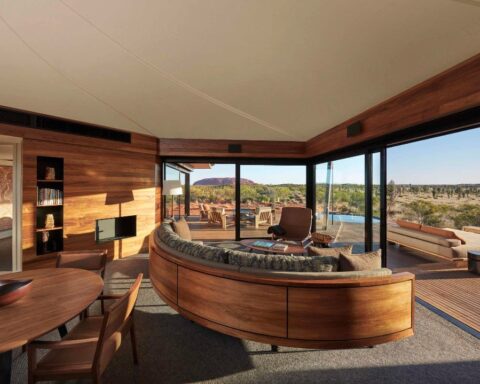The Rich Tapestry of Alice Springs’ History
Settlers from all over the world have come to call Alice Springs home. However, long before European settlement in the 1800s, Alice was occupied for tens of thousands of years by the world’s oldest living culture. Continue reading to gain an understanding of the Aboriginal Culture in Alice Springs..
The Arrernte People: Traditional Owners of Mparntwe
The Northern Territory is home to over 40 different indigenous language groups. One of these groups is the Arrernte people, who are the traditional owners of Alice Springs, known as Mparntwe in the Arrernte language. For many years, Aboriginal people living in the outback have used Alice Springs as a place to meet and trade. Still today, Aboriginals from a wide area of remote communities will travel to Alice Springs for convenience. As a result, a large number of different Aboriginal groups are represented here.

Language as Cultural Identity
Whilst Aboriginal groups are defined by their language, it represents much more than just the way they speak. The Arrernte language reflects a person’s cultural identity and belief systems. Around 25% of the Alice Springs population speak Arrernte as a first language.

The Importance of Sacred Sites
Alice Springs is one of the most densely populated areas for Aboriginal sacred sites in the Northern Territory. It houses over 100 sacred sites. Many have been lost to development, making those that remain even more special. It is important to respect sacred sites and avoid any damage or disturbance. Visitors to Alice Springs can visit some of these sacred sites. They can also explore a multitude of insightful galleries and museums to learn about the history, culture, and stories of the traditional owners.
Immersing in Aboriginal Culture at the Araluen Cultural Precinct
The Araluen Cultural Precinct is one of Alice Springs’ top attractions and an excellent place to immerse yourself in local Aboriginal culture. Here you will find seven registered Aboriginal sites and trees of significance, including the 300-year-old Corkwood Tree around which the Araluen Arts Centre is built. Museums and galleries within the precinct showcase Aboriginal art and artefacts that tell the story of Alice Springs’ Aboriginal culture. Additionally, there are other exhibitions on display.

Discovering Aboriginal Art Galleries
Outside of the cultural precinct, Alice Springs is home to a number of galleries where visitors can learn about Aboriginal artwork. One such gallery is the Yubu Napa Art Gallery, where visitors can meet Indigenous artists and watch them work. Additionally, a visit to Alice Springs Desert Park allows guests to gain a deeper understanding of the connection that local Aboriginals have to the wildlife and landscape. The park offers an immersive experience into the natural and cultural heritage of the area. Learn about the language, art, traditions, and Dreamtime stories of the area’s traditional owners.
Ewaninga Rock Carving Conservation Reserve
35 km south of Alice Springs is the Ewaninga Rock Carving Conservation Reserve, which has one of the largest collections of Aboriginal rock carvings in the Northern Territory. Travel further afield to the East MacDonnell Ranges to discover plenty of indigenous rock art in the stunning nature parks.
Celebrating Aboriginal Culture Through Annual Festivals
Annual festivals celebrate the local Aboriginal culture of Alice Springs. Desert Mob is a vibrant exhibition of Aboriginal Art, attracting artists, artwork, and visitors from desert regions around the Northern Territory, South Australia, and Western Australia. Meanwhile, Parrtjima is a 10-day festival of lights, celebrating Aboriginal culture, arts, and storytelling through installations, exhibitions, workshops, music, dance, films, and more.





